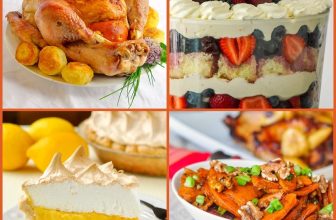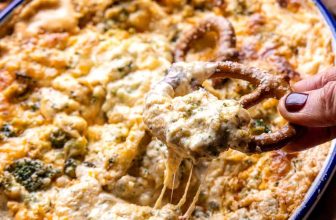
These homemade burger buns are soft and flavorful, and can be used for hamburgers, sliders, sandwiches and more! And best of all, they’re easy enough for anyone to make successfully at home.

Looking for a fun summer baking project, or a way to elevate your next summer cookout? Homemade hamburger buns are the way to go! Skip the often bland, generic ones from the grocery store and make your own— they’re SO MUCH better!
These homemade burger buns are made with a basic brioche dough, which just means they’re soft and tender, and actually have a lot of rich flavor all on their own. They’re the perfect starting point for filling with your favorite burger fixings at your next burger bar. Or use them however you like! Keep reading to see how EASY hamburger homemade buns are to make at home.
More homemade recipes to try: Check out my whole wheat brioche burger buns, sandwich and slider buns, cheesy herb burger buns, and homemade hot dog buns.

Table of Contents
baking tip:What is enriched yeast bread?


Ingredients you’ll need
Here’s all of the basic ingredients you’ll nee to make these homemade hamburger buns (full recipe at the end of this article):
- Bread flour
- Butter
- Active-dry yeast or instant yeast
- Eggs
- Sugar
- Milk
- Salt
- Water
- Sesame seeds (optional)
How to make homemade burger buns
- Prepare brioche dough. See my recipe for full instructions. Brioche dough is very soft and almost buttery feeling. It should be quite sticky to the touch, but not come apart and stick to your fingers. Be careful not to add too much flour or your buns will be tough and dry.


- Let dough rise. Set it aside in a warm place for about an hour, until an indent remains when pressed with a finger.


- Portion and shape buns. Using a scale is the best way to ensure all buns are the same size. Just weigh all of the dough and divide by 8. Once dough is divided evenly, pull and tuck dough until top is completely smooth (here’s a video if you need a little help).


- Let buns rise again. Place the buns on a baking sheet pan and cover with plastic wrap. Let the buns rise while you preheat the oven to 400°F.
- Flatten tops gently. While buns are rising, very gently press down on the tops of the buns 2-3 times to encourage buns to expand outward instead of up. This will give them their characteristic hamburger bun shape. Be careful not to push so hard that you push the air out and you deflate the buns or they will not rise.


- Add egg wash and sesame seeds. Egg wash is a quick combination of egg and water that you brush onto the tops right before baking. This is important because it gives the buns a nice golden color and gives the sesame seeds something to adhere to (if you want to add them).
- Bake. Bake the buns until the tops are golden brown, about 10 minutes. Let the buns cool completely before using.


- Slice, add a burger patty and toppings, and enjoy! Use these delicious buns as you like, they’re best served fresh the day they’re baked.


Ways to make burger buns in advance
You’ll want to serve these buns fresh the day they’re baked, but don’t worry, there are still options for prepping them in advance!
Chill or freeze buns for baking later: Shape buns as directed, then cover them on the sheet pan with plastic wrap and chill in the fridge for up to 12 hours, letting them come to room temperature for 1 hour before baking. If freezing, place wrapped sheet pan in the freezer for 1 hour, then transfer frozen buns to a freezer ziplock bag and freeze for up to 1 month. Let thaw in fridge or on counter, and then let them come to room temperature a bit before baking.
Freeze baked buns: Store cooled buns in a freezer ziplock bag or double wrap with plastic. Freeze for a month or more. Let thaw at room temperature or warm in a 350°F oven (covered with foil) for about 20 minutes.


Recipe FAQs
Bread flour has a higher protein content than all-purpose flour, which means it has the most gluten power. More gluten means more rise and better texture. Yes, you can use all-purpose flour if that’s all you have, but I highly recommend bread flour for yeast-risen recipes when specified.
Active-dry yeast or instant yeast (also known as quick-rise or rapid-rise) will both work for this recipe. If you use instant yeast, you may only need about half of the rising time. Otherwise, results are the same. This recipe has not been tested with fresh yeast.
I learned the “dry-blend method” for this recipe from Red Star Yeast, and I love that it saves a bit of time! If you are confident that your yeast hasn’t expired, you do not need to complete this step when making bread. Soaking yeast in water does hydrate it and speed activation along, however if you combine all dry ingredients with liquids heated to 120-130°F (which is much warmer than “warm water”) it accomplishes the same thing.
1) It could be that your yeast has expired. Check the expiration date on that packaging. If you don’t know, you can test the yeast. Add 1 packet (2 1/4 teaspoons) of yeast to a cup with 1/2 cup warm water and 1 teaspoon of sugar. Let sit for 10 minutes. If the mixture foams and increases in size, then your yeast is still good. If not, it has expired.
2) It’s possible you killed the yeast by if your melted butter and milk was too high of a temperature. Temperatures over 140°F will kill yeast, and it’s helpful to use a thermometer to make sure your liquids are between 120-130°F.
1) See solutions above in case it is an issue with your yeast.
2) Be sure to add only enough flour to achieve a firm but tacky dough. It should clear most of the sides of the bowl during kneading, and will feel very soft and tacky to the touch without actually coming off and sticking to your fingers. Adding too much flour will make a dense and dry loaf.
3) Give your dough enough time to rise in a warm place before baking. It should almost double in size each time.
Get the recipe
Burger Buns
Homemade buns to complete your summer barbecue. Can be used for hamburgers, sliders, sandwiches and more!
-
In a small saucepan, melt the butter. Add the milk and water, and warm over medium low heat until temperature is 120-130°F (use a thermometer for best results. If you don’t have a thermometer, you can remove from heat as soon as mixture is steaming.)
-
In the bowl of a stand mixer fitted with a dough hook (or in a large bowl if planning to mix by hand), combine 2 ½ cups of the bread flour, the yeast, sugar and salt. Add the warm water mixture and the whisked eggs, mixing on low speed until incorporated.
-
Add the remaining bread flour 2 tablespoons at a time while mixing on medium low speed until dough almost clears the bowl and is only a slightly sticky to the touch (It’s okay if some dough sticks to your fingers). You may not need all 3½ cups of flour. Knead for another few minutes until dough is very smooth and elastic.
-
Gather dough into a ball and cover bowl with plastic wrap. Put in a warm place and allow to rise until doubled, 1 hour or more.
-
Punch down dough gently and let rest for a few minutes. Divide the dough into eight equal pieces and shape into balls. Place on a sheet pan lined with parchment paper. Spray some plastic wrap with non-stick cooking spray and loosely place over the shaped buns.
-
Return to a warm place and continue to rise for an additional 30 minutes to 1 hour. While buns are rising, very gently pat the tops with your hands 2-3 times to encourage the dough to expand outward instead of upward. (Be careful not to push the air out of the dough though, or you’ll lose the rise and buns will be flat.)
-
When ready to bake, preheat oven to 400°F. Brush buns with egg wash and sprinkle with sesame seeds, if desired.
-
Bake until golden brown, about 10 minutes. Cool completely on a wire rack.
- Use a kitchen scale to first weigh the bulk dough, then divide that number by 8. Use the scale to make sure each bun is the same weight and size. This way buns will be uniform!
- Be sure the warm liquid mixture does not exceed 140°F! Temps higher than that will kill the yeast and prevent it from creating rise in the dough and buns.
- I like to give a range for the flour required in recipes like this because there’s so many factors that affect how much you’ll actually need (how you measure flour, for example.) This way you know to look for how the dough should look and feel, instead of relying on a number.
Calories: 281kcal, Carbohydrates: 45g, Protein: 10g, Fat: 6g, Saturated Fat: 3g, Cholesterol: 71mg, Sodium: 467mg, Potassium: 117mg, Fiber: 2g, Sugar: 4g, Vitamin A: 208IU, Calcium: 24mg, Iron: 1mg
This post was originally published in July 2010. Pictures have been updated and slight improvements have been made to the recipe.







